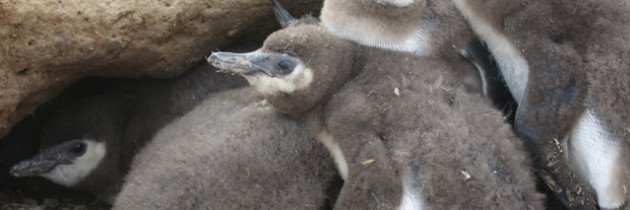Penguins, Study finds Climate Change is another danger
Life has never been easy for just-hatched Magellanic penguins, but climate change is making it worse, according to a decades-long study of the largest breeding colony of the birds. The chicks are already vulnerable to predation and starvation. Now, the study at Punta Tombo, Argentina, found that intense storms and warmer temperatures are increasingly taking a toll. “Rainfall is killing a lot of penguins, and so is heat,” said P. Dee Boersma, a University of Washington scientist and lead author of thestudy. “And those are two new causes.” Climate scientists say more extreme weather, including wetter storms and more prolonged periods of heat and cold, is one impact of a climate that is changing because of emissions of greenhouse gases in the atmosphere. While monitoring the penguin colony, Dr. Boersma and her colleagues also documented regional temperature changes and increases in the number of days with heavy rains.
The study, which is being published online Wednesday in the journal PLoS ONE, is one of the first to show a direct impact of climate change on seabirds. Most studies have looked at how warming temperatures affect animals indirectly, by altering predation patterns or food supplies.
William J. Sydeman, senior scientist at theFarallon Institute in California, who was not involved in the research, said the study linked changes in climate, which occur on a scale of decades, to the daily scale of life in the colony. “That’s a unique contribution,” he said.
The colony at Punta Tombo, in a temperate and relatively dry region about midway along Argentina’s coast, is home to about 200,000 breeding pairs of the penguins, which are about 15 inches tall as adults. Dr. Boersma has been working there since 1982, with long-term support from the Wildlife Conservation Society.
For this study, the researchers compiled data on nearly 3,500 chicks that they meticulously tracked by checking nests once or twice a day throughout the six-month breeding season, which starts in September.
“We knew when each chick hatched, and its fate,” Dr. Boersma said.
Typically, nearly two-thirds of hatchlings at the colony do not survive to leave the nest. In most years, the researchers found, starvation and predation — by other seabirds and small animals — caused the majority of the deaths.
But they found that heavy storms killed birds in 13 of the 28 years of the study. In two years, storms were responsible for most of the deaths. Extreme heat killed more hatchlings as well, although the effect was less pronounced.
Like other young birds, penguin hatchlings can die from hypothermia if their down gets wet and loses its insulating air spaces. The birds are most vulnerable from about a week after hatching — before that they are largely protected by a parent — to about six weeks, when they develop waterproof plumage.
“They didn’t used to have to contend with this variability in the climate,” Dr. Boersma said. “And they certainly didn’t have to contend with all this rainfall.”
Since 1987, the number of breeding pairs in the colony has declined 24 percent, Dr. Boersma said. It is difficult to calculate how much of that decline can be attributed to storms and rain, she said.
Dr. Boersma said the increasing frequency of heavy storms was most likely directly affecting other seabird species that were breeding in the region.
In fact, the same direct effect is being seen half a world away, in a terrestrial bird.
In a study of a population of peregrine falcons in the Canadian Arctic that was published last year in the journal Oecologia, researchers reported that heavy rains killed large numbers of hatchlings, and documented an increase in the frequency of such rains over decades.
Alastair Franke, a University of Alberta scientist who led the study, said he was stunned when he read Dr. Boersma’s paper. “It’s amazing that we’re seeing such similarity between the two studies,” he said.
In her work, Dr. Boersma showed that the mortality caused by storms was in addition to those from other causes.
Dr. Franke said that was one of the most interesting aspects of Dr. Boersma’s study.
“This is a double whammy for the penguins,” he said. “You’re still going to get all the starvation and predation. But now you get increased mortality from rainfall as well.”
Fonte: nytimes.com



